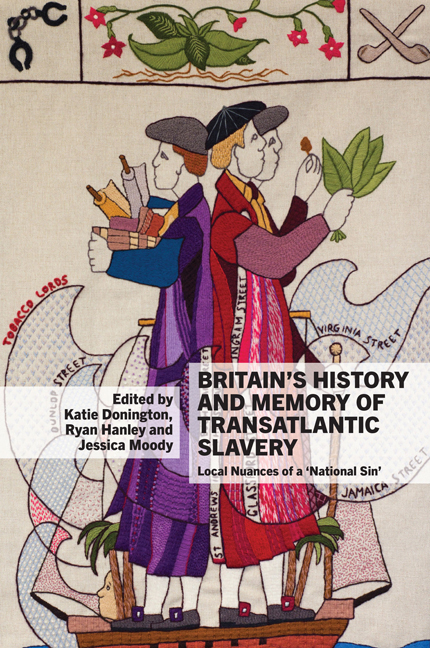Book contents
- Frontmatter
- Contents
- List of Illustrations
- Acknowledgements
- Contributors
- Introduction
- I Little Britain's History of Slavery
- 1 From Guinea to Guernsey and Cornwall to the Caribbean: Recovering the History of Slavery in the Western English Channel
- 2 ‘There to sing the song of Moses’: John Jea's Methodism and Working-Class Attitudes to Slavery in Liverpool and Portsmouth, 1801–1817
- 3 Portrait of a Slave-Trading Family: The Staniforths of Liverpool
- 4 Forgotten Women: Anna Eliza Elletson and Absentee Slave Ownership
- 5 East Meets West: Exploring the Connections between Britain, the Caribbean and the East India Company, c. 1757–1857
- II Little Britain's Memory of Slavery
- Afterword
- Selected Bibliography
- Index
- Plate section
1 - From Guinea to Guernsey and Cornwall to the Caribbean: Recovering the History of Slavery in the Western English Channel
from I - Little Britain's History of Slavery
- Frontmatter
- Contents
- List of Illustrations
- Acknowledgements
- Contributors
- Introduction
- I Little Britain's History of Slavery
- 1 From Guinea to Guernsey and Cornwall to the Caribbean: Recovering the History of Slavery in the Western English Channel
- 2 ‘There to sing the song of Moses’: John Jea's Methodism and Working-Class Attitudes to Slavery in Liverpool and Portsmouth, 1801–1817
- 3 Portrait of a Slave-Trading Family: The Staniforths of Liverpool
- 4 Forgotten Women: Anna Eliza Elletson and Absentee Slave Ownership
- 5 East Meets West: Exploring the Connections between Britain, the Caribbean and the East India Company, c. 1757–1857
- II Little Britain's Memory of Slavery
- Afterword
- Selected Bibliography
- Index
- Plate section
Summary
On a cold winter day in 1755, an enslaved African child caught his first glimpse of the country that would ultimately become his home. Writing 30 years later, he recalled being ‘very much struck with the buildings and the pavement of the streets in Falmouth’ as well as with a fall of snow, unusual in the mild maritime climate of Cornwall where Falmouth is a major port. He stayed a few weeks in Falmouth, where he first experienced a desire to learn to read, before being sent 200 km across the English Channel to the island of Guernsey. He spent the summer there and, having attempted to wash the blackness from his skin to more closely resemble the white people he was now among, he learned about and ‘began to be mortified at the difference in our complexions.’ The young Olaudah Equiano's introduction to the British Isles was not, as one might have guessed, via the west coast slave-trading ports of Liverpool, Lancaster or Bristol, nor did he go directly to London. Instead, he entered Britain via the English Channel and came ashore at some of the country's most remote locations, considered from the perspective of a journey by land.
Equiano's experience can hardly have been unique. It has been suggested that 3 per cent of Britain's seamen in the late eighteenth century were of African origin or descent, whether enslaved or free. Many of them may have come ashore at Britain's busy Channel ports, including those in Cornwall and the Channel Islands and, given their geographic location, one might assume that these places were involved in slave trading as well. Both lie where the English Channel meets the Atlantic. The Channel Islands, although British Crown Dependencies, are geographically a part of France, around 150 km south of the British mainland, but just 15 km from the coast of Normandy at the closest point. Although today Jersey is often considered the main island, in the eighteenth century, Guernsey and its capital St Peter Port were more economically developed. Across the English Channel, Cornwall is both the most southerly and the most westerly English county.
- Type
- Chapter
- Information
- Britain's History and Memory of Transatlantic SlaveryLocal Nuances of a 'National Sin', pp. 21 - 38Publisher: Liverpool University PressPrint publication year: 2016



